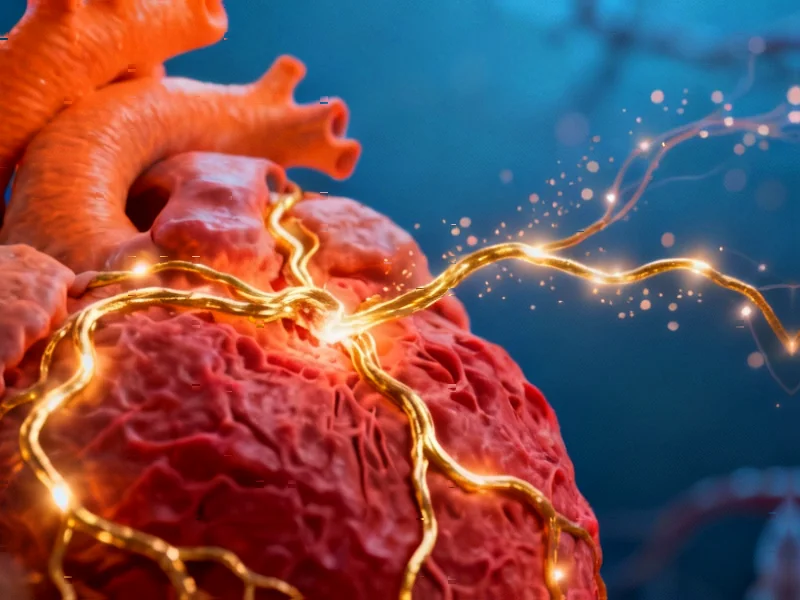The Hidden Neurological Toll of Cancer Treatment
For millions of cancer survivors worldwide, the end of chemotherapy doesn’t always mean the end of their struggles. A groundbreaking study has revealed that the cognitive impairment known as “chemo brain” may stem from chemotherapy drugs damaging the brain’s waste-clearance system, offering both explanation and potential hope for the millions affected by this debilitating condition.
Published in Communications Biology, the research provides the first comprehensive evidence that common chemotherapy agents can significantly impair the meningeal lymphatic system – the network of vessels responsible for clearing waste and transporting immune cells within the brain’s protective membranes.
Understanding the Mechanism Behind Cognitive Decline
Professor Jennifer Munson, co-corresponding author and director of the Fralin Biomedical Research Institute at VTC’s Cancer Research Center, explained the significance: “There’s compounding evidence now that these meningeal lymphatics are involved in cognitive issues, including Alzheimer’s disease and traumatic brain injury, too. Women are affected by chemo brain, or brain fog, much more than men when treated by very common chemotherapies.”
The research team developed an innovative three-tiered modeling system combining mouse studies with tissue-engineered human models – the first of its kind to replicate this unique tissue system. This approach allowed for unprecedented examination of how chemotherapy affects the brain’s drainage infrastructure.
Differential Impact of Common Chemotherapy Drugs
The study focused on two widely used chemotherapy agents: docetaxel and carboplatin. While both demonstrated negative effects on the lymphatic system, docetaxel showed particularly pronounced impacts. Researchers observed shrinking lymphatic vessels with fewer branches and loops – clear indicators of reduced growth and impaired regeneration.
“These are signs of reduced growth that indicate the lymphatics are changing, or not regenerating in beneficial ways,” Munson noted. “Lymphatic health really declined across all three models measured in different ways.”
These findings align with recent technology developments in medical research that are helping scientists understand how treatments affect biological systems at the cellular level.
Connecting Lymphatic Damage to Memory Impairment
The research team didn’t stop at anatomical observations. They conducted cognitive tests that revealed a direct connection between docetaxel treatment and memory deficits in mice. Brain imaging confirmed reduced lymphatic system drainage, creating a compelling chain of evidence linking chemotherapy to cognitive impairment through lymphatic dysfunction.
“That could potentially account for some of these memory deficits, which is similar to what we have seen in Alzheimer’s disease,” Munson explained. The parallel with neurodegenerative conditions suggests potential crossover in treatment approaches that could benefit multiple patient populations.
Gender Disparities and Future Treatment Directions
The study highlights significant gender differences in chemo brain prevalence, with women experiencing disproportionately higher rates of cognitive side effects. “Lymphatic diseases in general affect women more than men,” Munson said. “We are extremely interested in trying to understand that difference and why that difference might exist.”
Co-author Monet Roberts emphasized the broader implications: “Our study is important because it explores a very real, hidden layer of chemotherapy treatment that leaves lasting scars on the daily lives of those who are living with or have survived in their cancer journey.”
These findings come amid broader industry developments in medical research methodology that are enabling more precise investigation of biological systems.
Pathways to Potential Solutions
The research opens multiple avenues for potential interventions. Munson outlined the next steps: “The first step is knowing. And now the hope is to figure out how to help. Could delivering something pharmaceutically, such as a protein, alleviate the problem and not interfere with the chemotherapy? We know of other things that affect flow in the brain, as well, such as better sleep and exercise.”
This approach to targeted intervention represents an important shift in market trends in pharmaceutical development, where treatments increasingly focus on managing side effects while maintaining therapeutic efficacy.
Broader Implications for Cancer Care
The study represents a significant step toward recognizing and addressing the full spectrum of chemotherapy’s impacts. Roberts stressed that “this work underscores the need to consider not only survival, but also the long-term, often overlooked neurological side effects of cancer treatment on cognitive well-being and quality of life, especially in women who are disproportionately affected by these lasting side effects.”
As research in this field advances, scientists are also monitoring related innovations in computational modeling that could accelerate understanding of complex biological systems like the meningeal lymphatics.
Looking Forward: A New Era in Supportive Cancer Care
This research marks a paradigm shift in how the medical community understands and addresses the cognitive side effects of cancer treatment. By identifying specific biological mechanisms behind chemo brain, scientists can now develop targeted interventions that might preserve cognitive function without compromising cancer treatment efficacy.
The study’s multi-model approach and focus on gender differences provide a robust foundation for future research that could ultimately transform cancer survivorship care, ensuring that patients not only survive their disease but maintain quality of life throughout their recovery journey.
This article aggregates information from publicly available sources. All trademarks and copyrights belong to their respective owners.
Note: Featured image is for illustrative purposes only and does not represent any specific product, service, or entity mentioned in this article.



